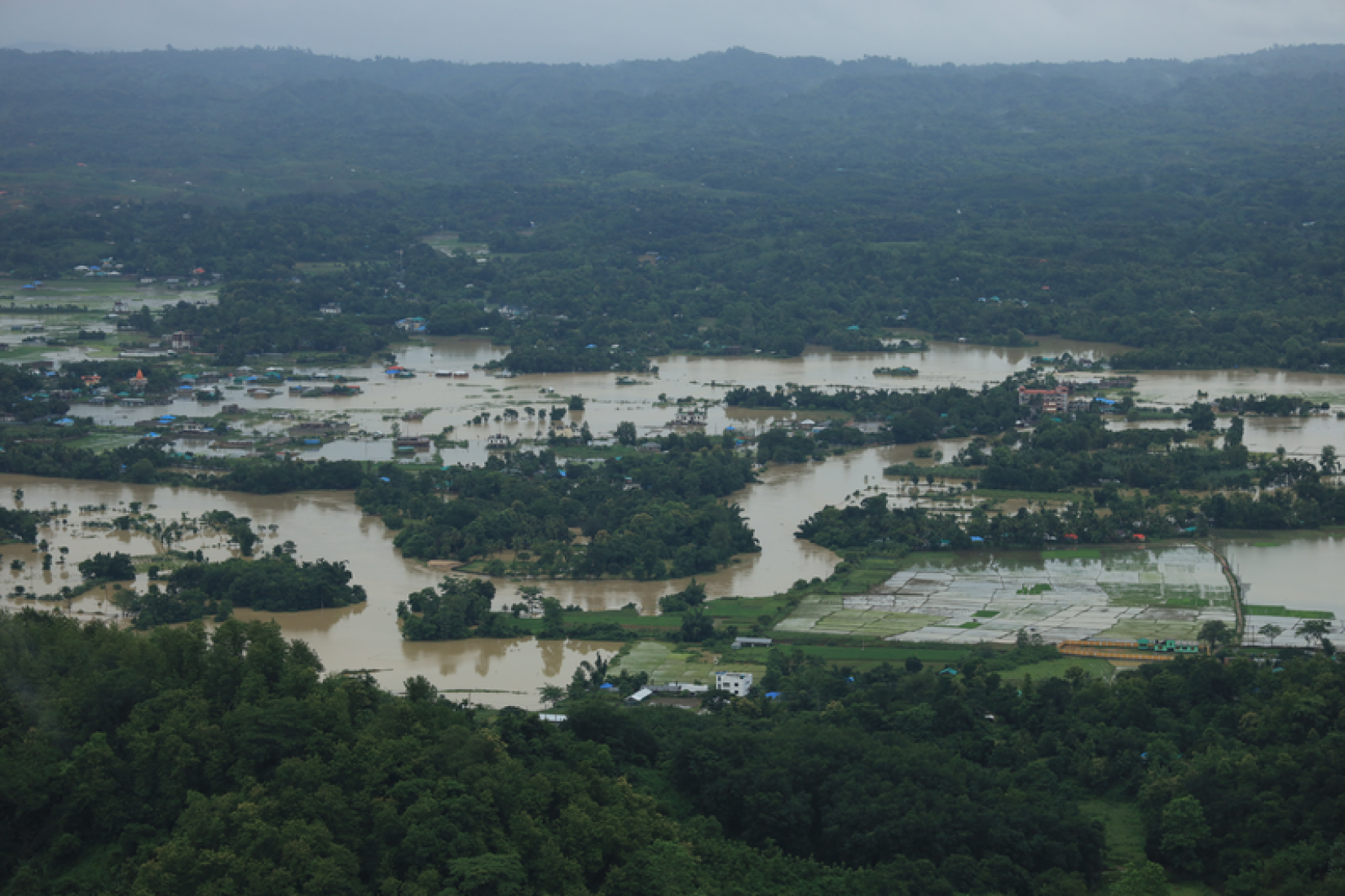UN in Bangladesh starts implementing CERF-funded activities in flood-affected areas of Chattogram
09 October 2023

The United Nations in Bangladesh has started scaling up life-saving activities in Chattogram Division after the release of USD 4 million from the Central Emergency Response Fund (CERF) in September 2023. The efforts will tackle the consequences of severe wide-spread flash floods and provide support to over 100 thousand people in need, including women, and adolescent girls living in hard-to-reach areas of Chattogram Division.
According to recent estimates, flash floods in Chattogram Division have affected 1.3 million people of whom 600,000 are in need of aid and 213,000 have been displaced. Affected households from the Chattogram Division, are among the poorest in the country, and their humanitarian needs have been further compounded by Bangladesh's worst dengue outbreak on record.
Welcoming the start of the implementation of the CERF-funded activities, the UN Resident Coordinator in Bangladesh, Gwyn Lewis, said, “The UN in Bangladesh is grateful for the Emergency Relief Coordinator's prompt support to allocate the funds for critically needed humanitarian aid for over 100 thousand people, affected by floods in Chattogram Division. In consultation with the government of Bangladesh, NGOs and humanitarian partners, the CERF will assist UN agencies to quickly scale up their life-saving relief activities and respond to the most critical needs of the vulnerable communities and individuals.”
The response activities funded by USD 4 million from CERF's rapid response window are being implemented by four UN agencies operating in Bangladesh – the Food and Agriculture Organization (FAO), the UN Population Fund (UNFPA), and the UN Children's Fund (UNICEF), and the World Food Programme (WFP) – in the flood-affected regions of Chattogram, Cox’s Bazar, Rangamati, and Bandarban Districts in Chattogram Division.
FAO is providing food security and agriculture assistance to protect the livelihoods of the flood-affected vulnerable communities by enabling them to resume crop production. The agency’s project assists households with emergency life-saving crop production packages that include inputs such as rice and vegetable seeds, fertilizers, and tools. The targeted communities are those primarily dependent on agriculture for their livelihoods and severely affected by floods.
UNFPA is providing support for the floods affected pregnant women, adolescent girls and transgender people to ensure their access to life-saving sexual and reproductive health (SRH) services and information and to protection them from the risk of gender-based violence (GBV). The UNFPA response includes mobile camps providing maternal care, family planning and emergency referrals; cash support to mitigate protection risks and to facilitate the affected people’s access to SRH and GBV services; distributing emergency kits to ensure personal hygiene, manage menstrual health, and protect the mothers and newborns, and providing survivor centred GBV response including psycho-social support.
UNICEF is providing lifesaving water, sanitation, and hygiene (WASH) assistance to flood affected vulnerable communities. This UNICEF project provides households with sufficient quantities of safe water to meet their domestic needs and access to safely managed sanitation services. This will be achieved through constructing climate resilient new water supply systems and toilets, reducing the risk of life-threatening water and sanitation-related diseases in affected areas. The project will also ensure the dignity of vulnerable groups, particularly women and girls, while strengthening communities’ resilience and linking humanitarian and development work.
WFP is providing food and cash assistance to people affected by the severe flooding to help them meet their basic food, nutrition, and other essential needs. To build resilience in combating climatic shocks, the agency will prioritize the most affected households who are in precarious situations due to the impact of flash floods and landslides
CERF is a mechanism through which donors pool their contributions in advance, allowing humanitarian agencies to provide initial, life-saving assistance wherever crises strike while they await additional funding.
For further information, visit the CERF official website. For the latest funding updates, visit the OCHA Financial Tracking Service.
ENDS







